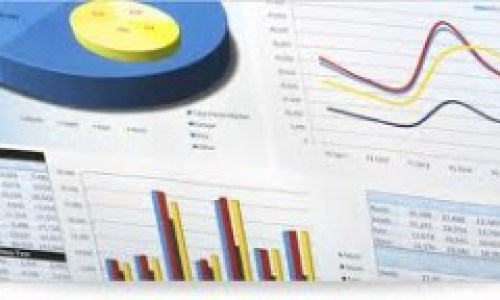What the Data Says – Decoding the Data Deluge
Why is data so important when it comes to warehouse or supply chain management? What role does data and information play in effective supply chain and warehouse management? The obvious answer is that the right data and information helps in improving the organization’s decision making and performance, which naturally result in better profits to the company.
Importance of data
Consider the key performance indicators (KPIs) we use for measuring the performance of a warehouse. KPIs depend on proper data. The more and better data we get, the better are the chances of measuring and improving the performance of the business.
McKinsey Global Institute (MGI) and McKinsey & Company’s Business Technology Office conducted a research that shows that the amount of data collected and mined has become extremely important for organizations for making financial decisions. Data is helping companies outperform their competitors in the industry. Companies adopt data sensors such as barcodes to determine how their products are being used in the real world and what new service offerings or future products can be offered.
It is not only the volume of information that makes difference to the company, but also the quality of information that is available. Real-time and high frequency nature of data gives a competitive advantage to a company over its peers. While the right data provides competitive advantage to an organization, the converse is also true. Wrong data can be equally detrimental to a company.
How to collect data?
We have already established the importance of data in decision making. The next question to ask is, “how do we collect data”?
Data collection techniques can be classified as quantitative and qualitative methods. Quantitative methods rely on data sampling and structured data collection techniques. Techniques such as linear programming and time-series analysis that use mathematical models can be classified as quantitative data collection techniques.
Unlike quantitative data collection techniques, qualitative data collection techniques are less structured and quite often, open ended. They rely more heavily on judgement and intuition than the mathematical model. Nonetheless, they too involve collecting extensive data. Some techniques include opinions of sales force, expert opinions, and Delphi method and consumer surveys.
The type of data collected may vary across different segments of the supply chain. For example, if it is transportation, the position of goods in transit or number of packs in movement is an important data that needs to be collected. In a warehouse, position of the product/SKU within the warehouse or the quantity of the products available on hand at any point of time is important data to be collected.
Advantages of data analysis
As you may have witnessed above, there are several benefits of data collection and analysis that are self-evident. Data analysis helps organizations make important decisions through:
- Identifying certain important and mission-critical trends.
- Providing better awareness regarding potential customer habits.
- Helping organizations in identifying performance problems that require action.
Apart from these benefits, certain data collection techniques help you avoid any wild guessing, in turn helping avoid wrong decisions. Data can also be extrapolated to obtain new insights and probable future trends.
Some data analysis techniques are Pareto analysis and What-If analysis. The Pareto-analysis is a statistical technique that helps in taking decisions. This is done by selecting a few tasks that can affect the outcome in a significant way. It uses the Pareto’s principle (80-20 rule). This technique is particularly useful where multiple possible courses of action are competing for attention. In a nutshell, the problem-solver estimates the benefit of each action and selects a number of most effective actions which can deliver a total benefit close to a maximal possible one.
What-if analysis, also called the sensitivity analysis, is a brainstorming technique that determines how small changes in the assumptions can affect the projected performance that is based on these assumptions. This type of analysis is used to compare various scenarios and possible outcomes based on changing conditions.
Here is an example of how data analysis can help a warehouse perform better. PALMS™ Analytics provides you in-depth information about warehouse space utilization in terms of either product volume or product weight. This includes providing data about how much space has been utilized as well as the inefficient usage of the available location capacity either in terms of weight or volume. The data received can help in planning efficient space utilization.
PALMS™ Analytics also helps in mapping a location in the warehouse as well as providing information regarding order fulfilment.
How Palms Analytics will help Supply Chains to bring in predictability
PALMS™ Analytics is powered by QlikView, the fastest growing BI product in the world. Clear visibility of KPI through powerful, interactive Business Intelligence & Analytics dashboards is the significance of this version.
PALMS™ Analytics phenomenally improves a warehouse’s analytical capability by offering a performance management platform that truly helps you control costs, maximize profitability and boost your business results.

